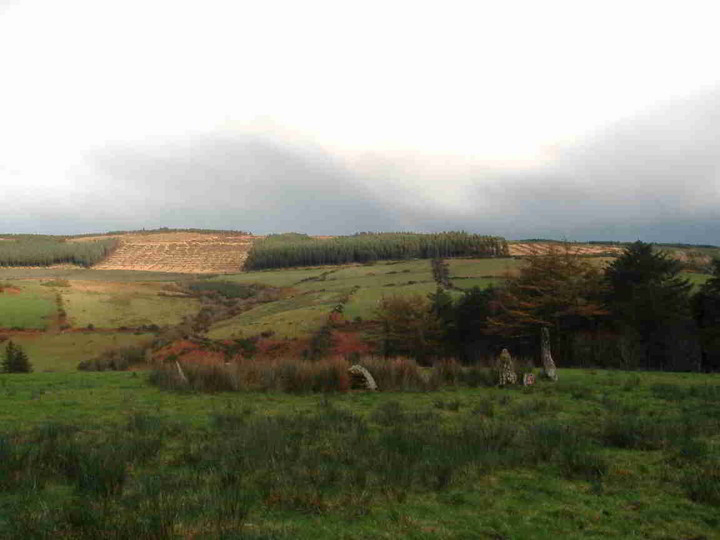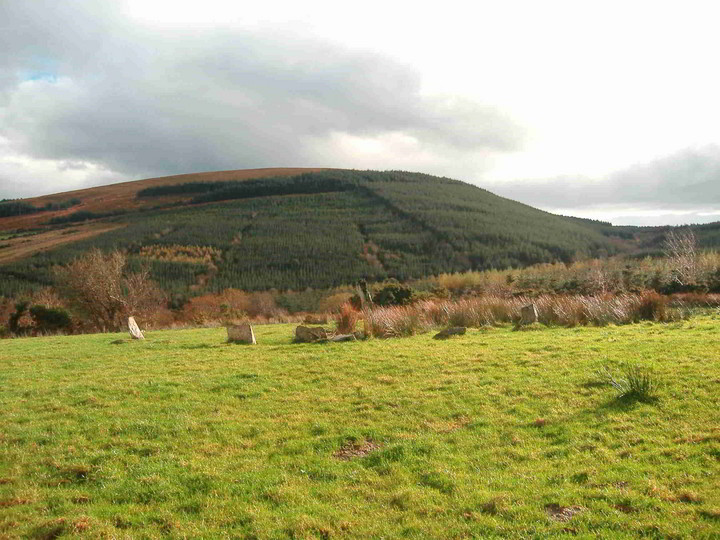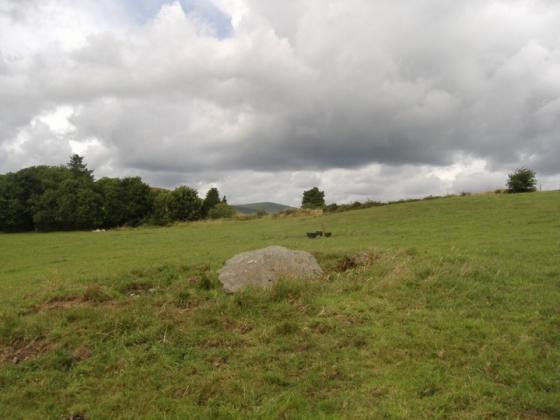
I don’t know if this has been pointed out before but this stone in the circle looks to me as if it has been split, I don’t know if that is recent or in antiquity.

I don’t know if this has been pointed out before but this stone in the circle looks to me as if it has been split, I don’t know if that is recent or in antiquity.

Once again another angle

Another angle

Another view

Another view

View with hills in background
Situated on a N-facing slope of high ground overlooking a valley to the N with a nearby stream to the E in a mountainous area. A circular area (diam. 12.5m) enclosed by eleven orthostats ranging in height from 0.15m to 2m with several prostrate stones around the perimeter of the circle. A large, flat, recumbent stone lies in centre of circle. (O Nuallain 1987, 142-4)
Best way to the circle is up the farm path on the right hand side of the road. Stop just before a ruined cottage with boarded up windows. Up the lane about 300m to the gate, climb over this and then another gate to the left. Then walk diagonally into the field and like all good stone circles it appears out of nowhere!
The circle seems to have been part of a mini-complex with possibly two wedge-tombs from what I can make of the descriptions.
All taken from the North Tipp Archaeological Inventory
“Baurnaglanna “Dermot and Grannias Bed” R837674
Megalithic tomb (possible, site). This feature, all trace of which had been removed by 1904, stood on the lower north-eastern slopes of Slievekimalta or Keeper Hill. An account in an OS Name Book (1840) describes it as ‘a few large stones stuck in the ground in the form of a bed’ (OS Name Book, 1904; De Valera and Ó Nualláin 1982, 98, No. 6)
Baurnaglanna “Cromlech” R843679
Megalithic tomb (possible, site). There is no recognisable ancient feature at the position indicated on the OS Map which is on the E side of a field-bank at the foot of a S-facing slope just north of the Mulkear River. An OS Name Book (1840) records that the name applied to ‘a heap of stones covering about a square perch (c. 5m?) of ground’. An account in a later OS Name Book (1904) claims that the feature in question was a horizontally laid stone. Crawford (1910, 41) noted a large stone buried in a field bank a projecting corner of which rested on a smaller stone. The nature of the feature referred to is uncertain. (De Valera and Ó Nualláin 1982, 97-8, No.5)”


























































































